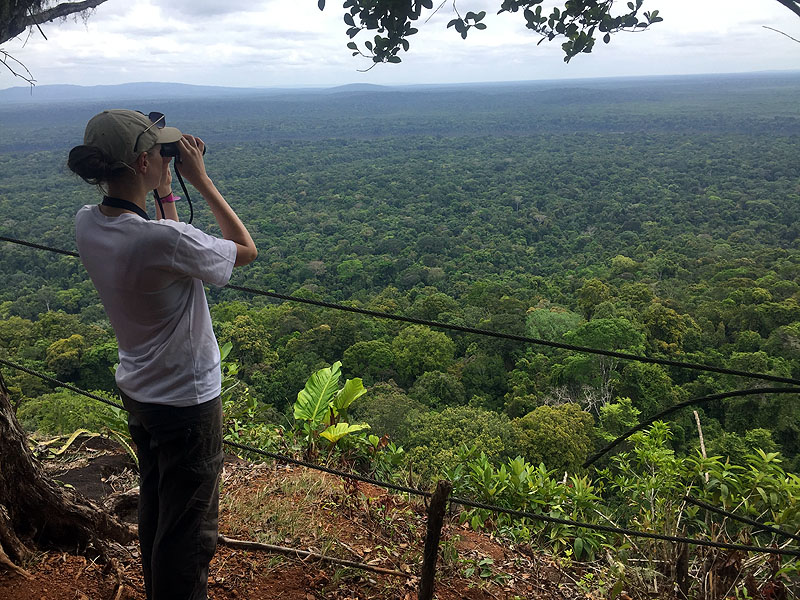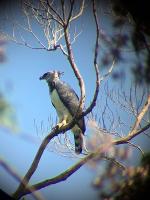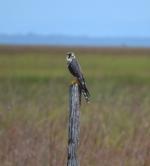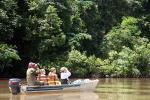Having recently returned from Guyana one of the main things I will never forget about this wonderful country is its enormous number of bird species. I have always been more of a fan of mammals rather than birds, but after spending nine days in the interior of Guyana my eyes have been opened to a whole new world.
I learnt very quickly that the number one rule of birding is a good set of binoculars (known as binos to birders). I broke this number one rule when I didn’t bring any but luckily I managed to borrow a pair.
Rule number two is to know how to use a pair of binoculars. It took me a couple of days practise to really get the hang of it. You have to close your right eye and focus the left side before focussing both sides. By the end of the trip I would say I was halfway to being an expert!
Next up, learn the lingo. There is a whole new language for birders: if it’s not already hard enough to learn the name of a bird in the first place, some have two, three or even four names and occasionally a nickname as well! Here are a few language tips to get you started:
- LBJ - ‘Little Brown Job’: used when an insignificant small brown bird passes by that no one is interested in.
- Lifer - used to describe the sighting of a bird you have never seen before in your life. For me this was about 95% of the birds I saw but for avid birders this can be their raison d'être.
- Twitcher - a most serious species of birder.
- SOB - ‘Spouse of Birder’: a wonderful acronym used to describe a person with no real interest in birds (i.e. me) who is frequently dragged on birding trips by their other half (i.e. my boyfriend)
- SSV - ‘Soul Satisfying View’: where not only do you see the bird, but you drink it in. I think I can claim to have had one of these on my trip to Iwokrama, where I had a long, clear 20 minute sighting of a harpy eagle. You don’t get much more soul satisfying that that!
The next two tips are optional but enhanced my birding experience. We had a ‘Field Checklist of the Birds of Guyana’ (a list of all 814 birds known to reside in Guyana) which meant we could check off the species we saw (over 180 in an 11 day trip!). Our guide also used a bird app, so he could show us detailed pictures of the bird we were looking at and also play a recording of the bird’s call.
Finally, bring plenty of patience on a birding trip. Birds don’t sit still or normally in plain view. They are, sensibly, hidden within the forest obscured by an array of branches and leaves making them extremely hard to spot. They also have an awful habit of flying away just as you are getting close enough to get a decent picture. Most of the time its best to ditch the camera and just enjoy the moment.
Hopefully these few pointers will prepare you for any potential birding trip. The sheer number of birds we saw was phenomenal and the whole experience was fantastic. There can be few places on earth which can offer such a wide variety of species in such a small area.





